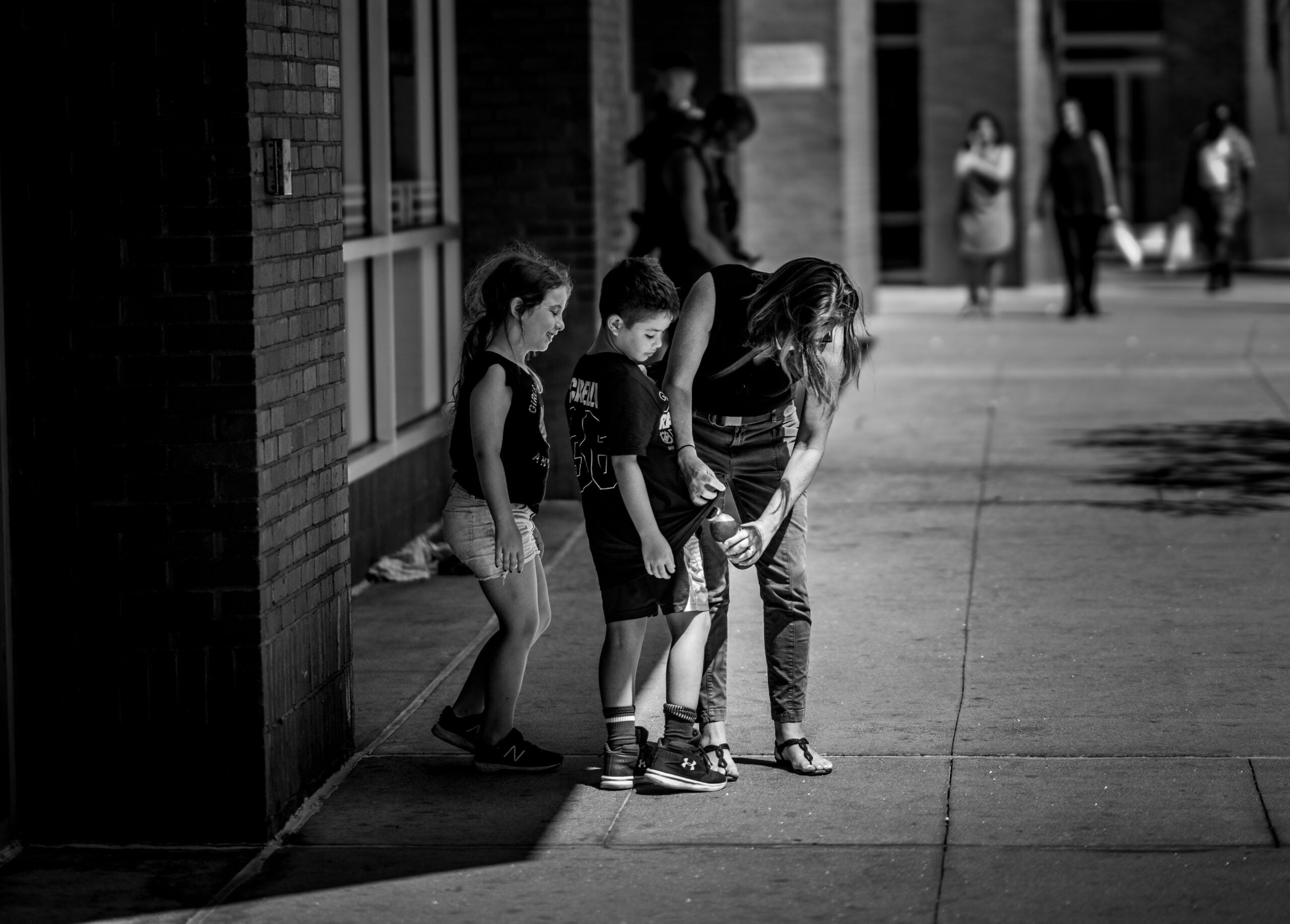Research Highlights Impact of Initiative Fatigue Among School Principals
When the COVID-19 pandemic hit, Felicia Drew had already been thinking about applying to the Educational Leadership Program at UCLA. After working for decades as an educator, she saw the value in earning her doctorate and in gaining a greater understanding of effective leadership. Unfortunately, just as it does for so many of us, life kept getting in the way. But when the pandemic forced schools to go remote and she saw the ripple effects, she knew it was time: “It was the pandemic—specifically, the stories about Black children disappearing when we went to remote learning. I was really shaken by those statistics. And I said, ‘I need to do this so I can be better at my job. I want to understand why these kids are disappearing.’”
Drew already had an understanding of how trauma can affect children and schools. As she explains, “I had been immersing myself and learning about trauma and its effects on our children and trauma-informed schools even before I enrolled in ELP.” When she arrived to the program, she had additional support and structure to continue that exploration: “Once I started that process of really diving in more deeply into the research on the topic, it just became where I wanted to continue to do that work.”

Drew was able to immediately blend the research she was doing in ELP with her work as a principal in LAUSD. In her first year in the program, she came across an article that described a study that explored the implementation of trauma-informed principles at a school in her district. “I found out that I had free access to the materials, that my district was already paying for it, but I didn’t know it. And I immediately started applying it—and we’ve been doing it ever since.”
Notably, there is overlap between trauma-informed instruction and what is commonly referred to as social-emotional learning (SEL). As Drew explains it, trauma-informed work supports students’ mental and academic well-being. To that end, it “has these extra elements, and SEL is just one component of it. Trauma-informed schools have a huge focus on social-emotional learning, and you’re doing restorative justice practices. You are making sure that those students get access to counseling and therapy. There are multiple elements.”
From her exploration of the literature, Drew knew that trauma-informed practices were effective but were not being widely applied. “My goal was to understand why,” she says. Her dissertation study, Drama, Trauma and the New Normal: Understanding the Role of School Administrators in Creating Trauma-Informed Schools, explored what was getting in the way of principals who might be interested in bringing this approach to their own schools.
“I had a couple of hypotheses, and one of those was simply that they weren’t deeply attuned to what it was. And I was also concerned that perhaps they didn’t necessarily think it was a part of their responsibilities.” Drew knew from prior studies that some teachers felt that this work fell outside of their job descriptions; she was also aware that backlash against SEL could be to blame.
Through interviews with 10 high school and middle school principals in a diverse urban district, she discovered that “it wasn’t at all a question of ‘I don’t think this should be a part of my responsibility.’ They wholeheartedly recognize that their kids struggle with trauma and recognize that it is important for them to address trauma. So then it was trying to understand, ‘Okay, if you believe this, then why isn’t it happening?’”
Drew says her biggest takeaway from her study is how much of an impact a phenomenon referred to as “initiative fatigue” has on principals’ work: “Just too many things to do. And some couldn’t even articulate if they had a trauma-informed initiative, or they couldn’t pinpoint when the professional development was done on the subject.” Indeed, she heard little resistance to the idea of trauma-informed instruction but heard quite a bit about how difficult it would be to prioritize it. “They said, ‘On a practical level, I know I have to do it to get to the kids. But by the same token, they keep dumping more and more on the schools.’”
Drew says that even though she went into her study familiar with the concept of initiative fatigue, she was still surprised by how many participants “really had no idea what our district’s initiatives were related to trauma-informed instruction.” She was surprised by “how many didn’t remember, couldn’t remember the presentation provided by the school district and didn’t know it was in the district’s strategic plan.” From all of this, she says, she learned “how great the impact of the initiative fatigue really is.”
Drew gathered her dissertation data in 2024, when some challenges created by the pandemic had arguably lessened. There seemed to be less emphasis on tending to students’ social-emotional needs, but continued attention to their test scores. In fact, she heard from principals that “I can’t spend a lot of time thinking about that. I have to focus on this, because if I don’t move test scores or I don’t improve my attendance, I will get called out for that. But I will not get called out if I don’t have a calming room on my campus.”
Moreover, Drew observed that as pandemic-related funding began to disappear, schools that were already struggling with inadequate resources for addressing trauma found themselves in even more dire situations. As a result, the principals “feel like there are not enough trained professionals that they can turn to and say, ‘This is something I really believe in. Can I give this to you to handle? Can you lead the professional development on trauma-informed instruction?’ They need that support, and it doesn’t exist for them.”
Importantly, however, Drew sees the continuing impact of trauma-informed practices at her own school site. She has been able to incentivize her teaching staff to implement the principles, and this year she made it a requirement that all new teachers participate in training on mindfulness and social-emotional learning—two integral elements of a trauma-informed school. She credits ELP with giving her the confidence to take these steps. “All new teachers have to come to this meeting. I don’t make them adopt it for their classrooms, but the number of adopters grows each year through this process.”
And she sees what she calls “the immediate impact” at her own school site. For example, fights among students and discipline referrals have decreased since teachers began using trauma-informed approaches. In addition to these data points, she also regularly gathers feedback from teachers as they implement these approaches. She says that teachers report, for example, that “even though students may resist participating in mindfulness exercises, when they are implemented with fidelity, the students are calmer, more focused, and their behavior in class improves.”
Drew has made trauma-informed instruction an ongoing priority in her own work because she recognizes that the pandemic is not the only source of stress and trauma for students. “The statistics show us that a significant number of our kids have been coming to school with trauma all the time—and some of them have generational trauma. Our African American students, our Native American students, our Armenian students, for example, have been doing that for a long time—it’s not a new problem. It’s not just a COVID problem or a pandemic problem.”
That said, she understands how this work has slipped off the radar for many of her colleagues. “In the immediate aftermath of the pandemic, when we returned to school, it was ‘Okay, we need to focus on social-emotional learning.’ And that immediately got squashed with ‘accelerating learning, accelerating learning, accelerating learning’ and ‘the losses, the losses, the losses.’ And they need to go back to bringing this back to the top.”
But the challenge is not just the sheer number of programs and initiatives—it also the ways in which these efforts and priorities are communicated. “I know that the research tells me it’s not just my school district, right? This is a phenomenon that’s happening everywhere. We just need to stop for a moment and ask, ‘What is it that we want? What do we need?’ And we need to reevaluate all the things that we’ve been doing and just slow down. We just have to slow down and pick one thing to focus on.”
Currently, educators in Drew’s district learn about resources and initiatives in a number of ways, including during comprehensive summer institutes and through written materials. Drew explains, for example, that every year the district distributes a bulletin that lists the priorities for that year. Trauma-informed instruction was on that list for two consecutive years, but Drew believes it was still too easily overlooked: “Don’t bury it in a memo where it’s part of 10 different priorities that you want to focus on in that year.”
Accessing information and resources can also be an opaque experience for school leaders. An example of this is the learning management system (LMS), an important source of information for educators, that is used by students, parents, and district personnel. Users can join individual, specialized groups on the LMS, but they need to seek out these groups directly. And, Drew notes, new information is constantly being added. “So you can literally open up that LMS and people from all over the place are dropping information on trauma-informed instruction—it’s here, it’s there, and amongst everything else. And you have people who have titles that will sound different, and they overlap. They overlap on who’s doing what. And so it can become confusing.”
Based on her study and her own experiences, Drew believes that principals need meaningful professional development related to trauma-informed practices. Deeper understanding of what’s at stake and their role in addressing trauma will help them better prioritize this work, she says. Likewise, access to trained support personnel will ease some of the burden of adding this priority to their efforts.
Ultimately, however, educators and administrators need relief from initiative fatigue. To this end, Drew says we need to “give school principals more autonomy and just realize that they’re trying to do too many things. When I hear principals saying that now, five years after the pandemic, students’ behavior has not returned to our baseline, that they are still struggling with that—that tells me that we’re not giving them the time to just stop and focus” on trauma and related SEL. “I really believe that we are limited with all the other initiatives that we do, that if we don’t attend to this, we are going to continue to leave children behind.”
Drew’s dissertation brief, “Why Aren’t Schools Addressing the Needs of Trauma-Impacted Students?” is available online on the ELP website.
